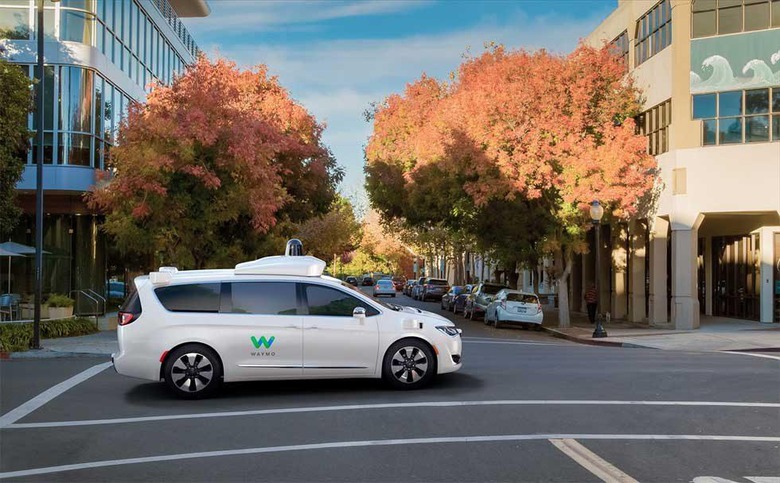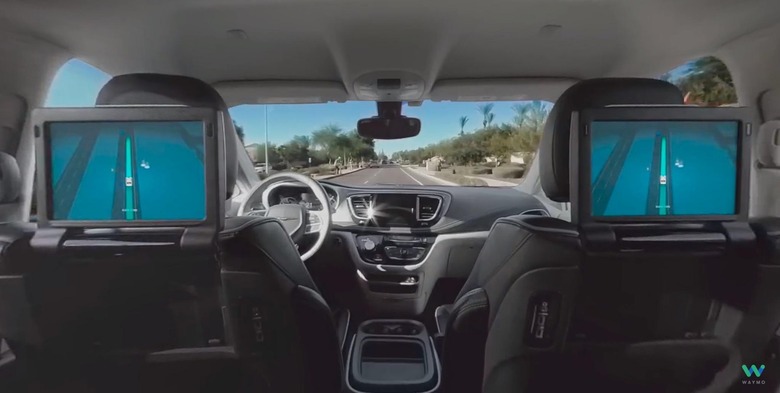Waymo's Autonomous Cars Are Leaving Human Drivers Furious
Waymo's autonomous cars may not be as advanced as widely believed, with insiders along with human drivers sharing the roads with the Alphabet company's Arizona trial warning a reality-check is required. The self-driving car project was spun out of a Google division, and began real-world testing in Phoenix, AZ in 2016.
In November 2017 meanwhile, in response to changes in Arizona's policies around driverless vehicles and human operators, Waymo began tests without a safety driver in the vehicle. Along with its own trials, it has also been running an early-access program. Roughly 400 "early riders" are given rides to work and school in the Chrysler Pacifica minivan-based prototypes.
The general consensus is that, out of all of the companies operating autonomous car research, Waymo is the furthest along. According to a new report by The Information, however, while that may be true, the current talents of self-driving cars are still far from ideal. Speaking to insiders familiar with the ongoing project, as well as residents of Phoenix which must coexist with the Waymo vehicles on the road, a definite work-in-progress is revealed.

Perhaps the key issue that's reported is one that has given numerous autonomous car projects pause: how robot cars that follow the rules exactly will share asphalt with human drivers that regularly bend or break those rules. One cited example is the Waymo minivans getting confused when other drivers don't indicate for an upcoming maneuver, or don't stick to their lanes when turning. "Some drivers make such wide left turns in front of the Waymo vans that the vans react defensively," the report suggests.
Since that defense is typically to slam on the brakes, that can in itself prompt other problems. Waymo, like other driverless car projects, regularly releases crash reports detailing any incidents its vehicles are involved in. Typically, the cars are the victims of collisions from other, human-operated vehicles. However, this new report hints that those rear-end collisions could well be precipitated by sudden, unexpected stops by the Waymo car.
Other reported hurdles include metered traffic lights – which control the pace of vehicles entering a highway – and merging into busy traffic. According to one insider, the "gap-finding algorithm is not up to snuff," it's reported. Having been programmed to be conservative in its driving, dealing with aggressive human drivers, particularly at rush hour, can also be a challenge.

It's not all negative. Waymo's cars can apparently go days without human intervention, and the driving in general is much smoother and better at dealing with normal highway traffic than it once was. "It's still a student driver, but it's the best student driver out there," one source familiar with the program said of the robotic cars.
Nonetheless, despite the changes in Arizona policy – and Waymo's own announcement that it would be operating safety-driver-free vehicles – the majority of the autonomous fleet continues to have safety drivers, The Information reports. A driverless taxi company, which Waymo has said will start up later in the year for the suburbs of Phoenix, will continue to have such a presence in the car.
For its part, Waymo says it's responding to feedback from human drivers in the area, and continuously refining its algorithms. How quickly that will get the cars to a point where they're comfortably coexisting with regular people remains to be seen; or, indeed, if rule-breaking humans and rule-observing robots can ever be happy traveling together.
